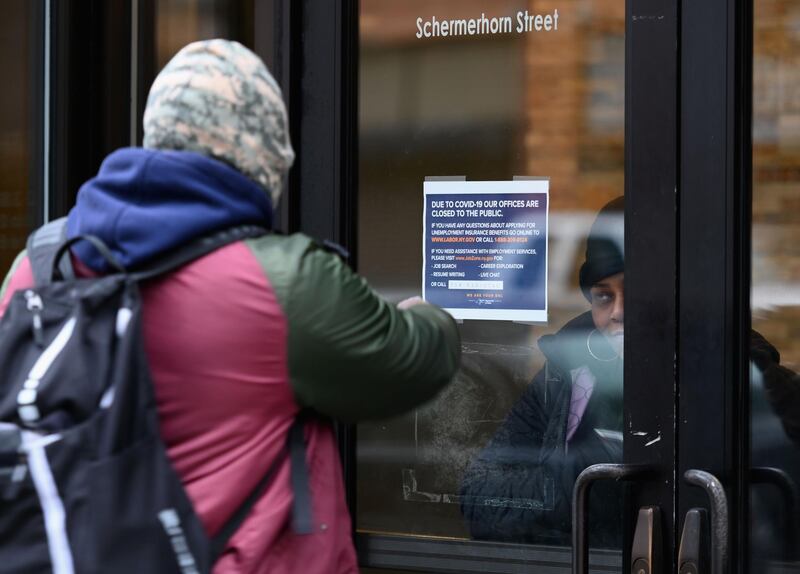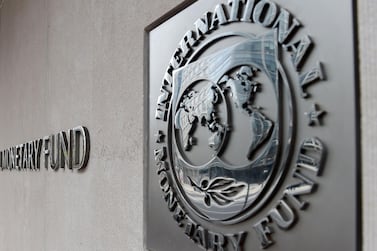More than five million Americans filed for unemployment benefits last week, bringing the total in the month since the coronavirus pandemic throttled the US economy to 22 million and effectively erasing a decade worth of job creation.
Initial jobless claims of 5.25 million in the week ended April 11 followed 6.62 million the prior week, according to Labour Department figures released on Thursday. The median estimate of economists was for 5.5 million, with projections ranging as high as eight million.
The four-week sum compares with roughly 21.5 million jobs added during the expansion that began in mid-2009.
The latest figures suggest an unemployment rate currently around at least 17 per cent - far above the 10 per cent reached in the wake of the recession that ended in 2009 - in a sign that the effects of shutdowns have spread well beyond an initial wave of restaurants, hotels and other businesses. Another reason for elevated claims is that Americans are getting through on outdated or overwhelmed systems after previously being stymied.
Even so, the data showed most states reported declines in claims from the prior week on an unadjusted basis, suggesting that the breakneck pace of job losses is starting to slow, if just a bit. Filings last week could also have been limited by the holiday.
Continuing claims, or the total number of Americans receiving unemployment benefits, jumped by 4.53 million to a record 12 million in the week ended April 4. Those figures are reported with a one-week lag.
The S&P 500 index of US stocks rose at the open, while 10-year Treasury yields were lower and the dollar was higher.
Other reports on Thursday showed the broadening and deepening impact of efforts aimed at preventing the spread of Covid-19.
Housing starts slumped in March by the most since 1984, while manufacturing in the Philadelphia Fed’s region contracted in April by the most since 1980.
Last week also marked when banks were starting to lend to small businesses to keep payrolls intact, part of a $2 trillion stimulus package. The Paycheck Protection Programme was on the verge of depleting its $349 billion in funds this week and lawmakers were haggling over boosting the plan, while many companies reported difficulty accessing the money.
In addition to the extent to which the pandemic is brought under control, the delivery of stimulus funds to Americans and businesses will help determine the speed of any recovery in output and employment. Most economists expect a rebound starting in the second half, though it could take several years or longer to return to employment levels seen before Covid-19 arrived in the US.
California had the most claims last week, at about 661,000 on an unadjusted basis, down from 919,000 the previous week
New York was next at about 396,000, followed by Georgia at 318,000 and Texas at 274,000.
“These obviously are historically horrific data, but relative to the more extreme projections of 20 per cent-plus unemployment rate,” the latest figures suggest “we’re tracking a bit lower than that,” said Brett Ryan, senior US economist at Deutsche Bank. “We’ve seen two consecutive weeks of declines in initial claims, so from that perspective, we may have seen the peak in terms of the initial wave of unemployment.”







